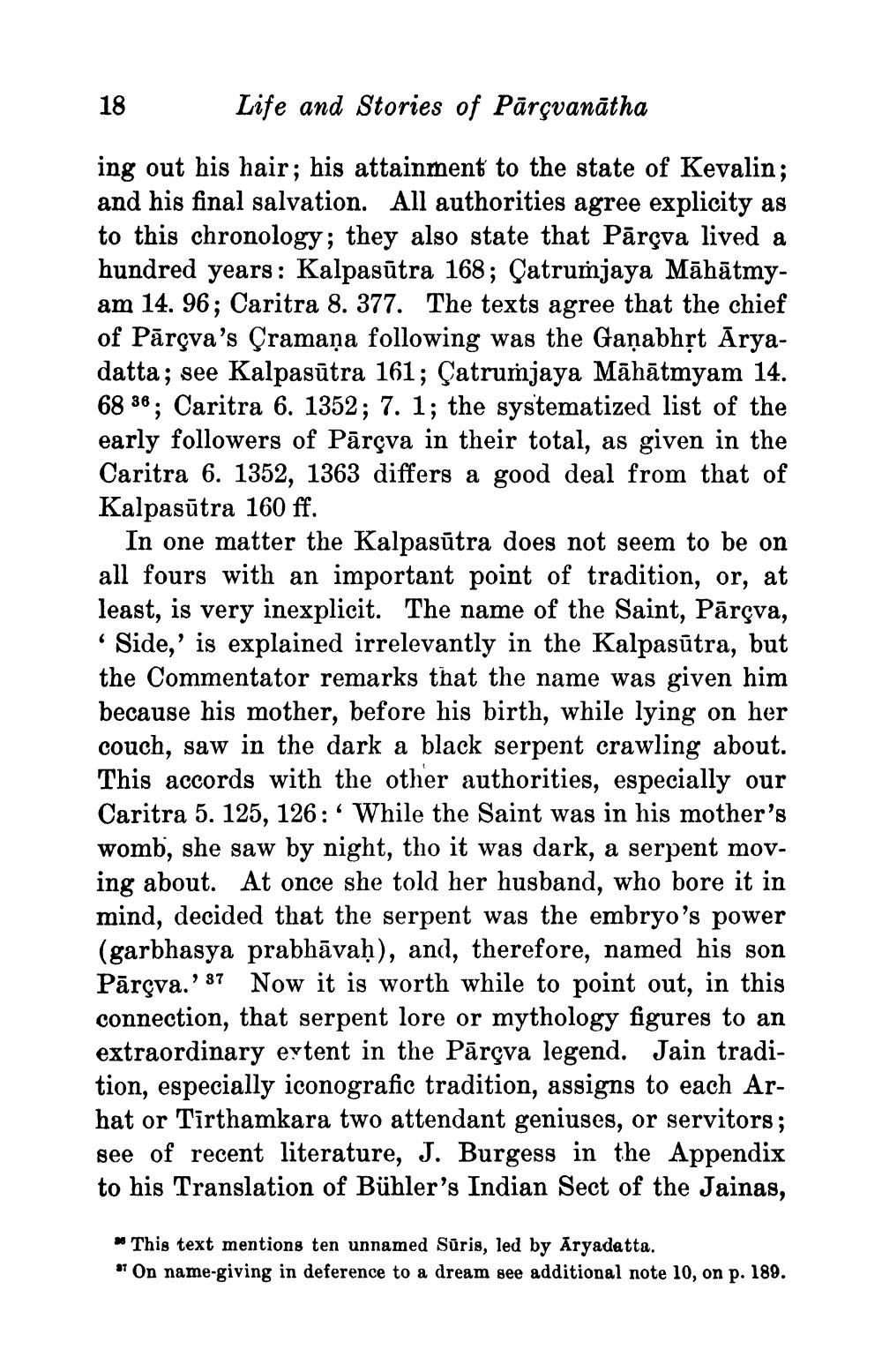________________
18
Life and Stories of Pārçvanātha
ing out his hair; his attainment to the state of Kevalin; and his final salvation. All authorities agree explicity as to this chronology; they also state that Pārçva lived a hundred years: Kalpasūtra 168; Çatrumjaya Māhātmyam 14. 96; Caritra 8. 377. The texts agree that the chief of Pārçva's Çramaņa following was the Gaṇabhrt Aryadatta; see Kalpasūtra 161; Çatrumjaya Māhātmyam 14. 68 38; Caritra 6. 1352; 7. 1; the systematized list of the early followers of Pārçva in their total, as given in the Caritra 6. 1352, 1363 differs a good deal from that of Kalpasūtra 160 ff.
In one matter the Kalpasūtra does not seem to be on all fours with an important point of tradition, or, at least, is very inexplicit. The name of the Saint, Pārçva,
Side,' is explained irrelevantly in the Kalpasūtra, but the Commentator remarks that the name was given him because his mother, before his birth, while lying on her couch, saw in the dark a black serpent crawling about. This accords with the other authorities, especially our Caritra 5. 125, 126: While the Saint was in his mother's womb, she saw by night, tho it was dark, a serpent moving about. At once she told her husband, who bore it in mind, decided that the serpent was the embryo's power (garbhasya prabhāvah), and, therefore, named his son Pārçva.' 87 Now it is worth while to point out, in this connection, that serpent lore or mythology figures to an extraordinary extent in the Pārgva legend. Jain tradition, especially iconografic tradition, assigns to each Arhat or Tirthamkara two attendant geniuses, or servitors; see of recent literature, J. Burgess in the Appendix to his Translation of Bühler's Indian Sect of the Jainas,
* This text mentions ten unnamed Sūris, led by Aryadatta. * On name-giving in deference to a dream see additional note 10, on p. 189.




